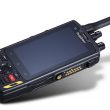Analyst: Pricing pressures will affect RF power amplifier market
Radio frequency power amplifiers are an integral part of all communication base stations and are one of the most expensive component sub-assemblies in wireless infrastructure equipment. However, price pressures loom, so the sector must reduce the cost of this vital component part while still maintaining its expected performance level, said Lance Wilson, research director for semiconductors at ABI Research.
The RF amplification market, though relatively small, is strong and in fourth quarter 2006 was worth about $1.5 billion, according to ABI. (In comparison, the wireless infrastructure market equaled about $500 billion over the same period.) While Wilson expects the cellular and mobile wireless infrastructure markets to continue to support amplifier equipment sales in the coming years, he warns that the market may grow by only one-third over the next three years.
“The huge growth days that we saw for twenty years since the early 1980s — until probably 2002 to 2003 when it really peaked — are gone,” Wilson said. “It’s no longer in a sustained-growth period.”
New technologies may have a tough time penetrating the market for RF amplifiers because of pricing pressures, Wilson said, explaining that such devices are priced per watt of power. The market currently pays about 35¢ per watt, but that is expected to decrease to 20¢ per watt in five years.
“Each time that price ratchets down, it tends to block entrants of new technologies because mobile wireless infrastructure is a very cost-driven market,” he said. “And granted, you may have incremental performance improvements with new technologies, but the price still rules the day.”
Researchers currently are testing a new amplifier material dubbed gallium nitride, or GaN, a semiconductor material that consists of a wurtzite crystal structure with a wide, 3.4 electronvolt band gap used in high-power and high-frequency devices. Because GaN transistors can operate at hotter temperatures and work at higher voltages than GaAs transistors — the material currently used in amplifiers — they make an ideal material for power amplifiers at microwave frequencies, Wilson said.
“It holds a lot of promise, but I think its principal impact will be in the microwave area,” he said. “The technology, when used in conventional topology amplifiers, is too expensive.”
Q4 2006 WIRELESS INFRASTRUCTURE MARKET
Wireless infrastructure market as a whole:
$500 billion
RF amplification market segment:
$1.5 billion
Source: ABI Research
AMPLIFIERS, FILTERS AND REPEATERS RELATED READING
The key to RF signal amplifier specs
April 2007
Mobile Radio Technology
by Harold Kinley
The value of ferrite RF isolators
March 2007
Mobile Radio Technology
by Harold Kinley
A new blueprint for an old problem
January 2007
Mobile Radio Technology
by Doug Mohney
Solving in-building coverage problems
October 2006
Mobile Radio Technology
by Jay Jacobsmeyer












